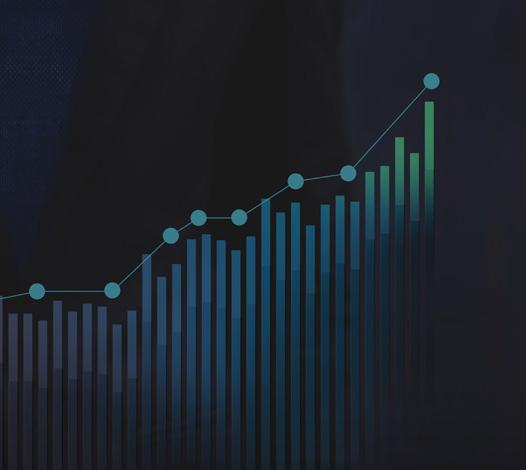
3 minute read
Trucking Market Could See 25% More Capacity Than Needed for most of 2023
Calculating trucking capacity for the U.S. economy has always been an imperfect science. Capitalist systems are often hard to predict. For example, in 2021, the shipping market was white hot, and capacity was tight. Today, not so much.
According to the Contract Load Accepted Volume Index (CLAV), which calculates accepted loads moving under contracted agreements, current volume is 25% lower than the highest level two years ago when many fleets expanded capacity to meet robust demand.
Advertisement
And, according to recent Federal Motor Carrier Safety Administration data, exits are just now starting to overtake entrants, meaning 25% is probably low. That number could linger for most of this year as the Federal Reserve continues to fight historically high inflation with interest rate hikes.
In fact, there are more reasons to expect weakening demand rather than strengthening as the year proceeds, which means trucking companies have to play a waiting game as to when some amount of pricing leverage will return.
Luckily, most companies or owneroperators are slow to react to capacity issues, most being very deliberate in increasing capacity or downsizing. Large fleets will take months to make these decisions. However, fleets that misjudge growth opportunities can be long term losers.
Considering the lengthy and costly process to expand, the decision is extended. For an owner-operator it can take years to make the decision to buy another truck. With the market only changing about 1% per month the decision to expand or contract is not without a good deal of speculation.
The market, of course, is cyclical, and trucking remains the most relied-upon freight transport mode in the U.S., with trucks moving about 12.5 billion tons of freight valued at more than $13.1 trillion in 2022.
“I think this year we will see a lot more normality in the market or a lot more seasonality,” said Dean Croke, principal analyst at DAT Freight and Analytics, a U.S. based transportation information service.
“From the time of the pandemic through the end of 2022, we saw little seasonality in the market. There were hints of seasonality, so you saw a little bit of a bump in rates because of the building season in the spring, but the whole peak season never materialized,” concluded Croke


tr~ikMg mwrkIt 2023 dy izAwdwqr smyN leI loV nwloN 25% v~D smr~Qw dyK skdI hY[
AmrIkw dI AwriQkqw leI tr~ikMg smr~Qw dI gxnw krnw hmySw ie~k ApUrn ivigAwn irhw hY[ pUMjIvwdI pRxwlIAW dw AMdwzw lgwauxw Aksr AOKw huMdw hY[ audwhrn leI, 2021 iv~c, iSipMg mwrkIt dI smr~Qw qMg sI pr A~j ieh kIqw sI[ hwl hI dy "PYfrl motr kYrIAr syPtI AYfiminstRySn" fytw dy Anuswr, inkws ny pRvyS krn vwilAW ƒ pCwVnw SurU kr id~qw hY, Bwv 25% Swied G~t hY[ ies hox dI aumId hox dy hor kwrn hn, ijsdw mqlb hY ik tr~ikMg kMpnIAW ƒ ieMqzwr krnw pvygw ik kImq dw lwB kdoN vwps Awvygw[
KuSiksmqI nwl, izAwdwqr kMpnIAW jW mwlk-Eprytr smr~Qw dy mu~idAW 'qy pRqIikRAw krn iv~c sMXm vrqdy hn[ v~fIAW PlItW ƒ ieh PYsly lYx iv~c mhIny l~gxgy[ hwlWik, PlItW jo ivkws dy mOikAW dw glq AMdwzw lgwauNdIAW hn, lMby smyN leI hwrn vwlI siQqI ivc Aw skdIAW hn[ ivsQwr krn leI lMmI Aqy mihMgI pRikirAw ƒ iDAwn iv~c r~Kdy hoey, PYslw A~gy vDwieAw jWdw hY[ ie~k mwlkAwprytr leI ie~k hor tr~k KrIdx dw PYslw lYx iv~c keI swl l~g skdy hn[ mwrkIt isrP pRqI mhInw 1% bdlx dy nwl, ivsQwr jW PlIt Gtwaux dw PYslw ie~k cMgy Anumwn qoN ibnW nhIN ilAw jw skdw[ tr~ikMg AmrIkw iv~c sB qoN v~D BrosymMd mwl FoAw-FuAweI dw swDn bixAw hoieAw hY, ijs iv~c tr~kW v~loN 2022 iv~c $13.1 itRlIAn qoN v~D mu~l dw lgBg 12.5 iblIAn tn mwl FoieAw igAw hY[
" DAT Frieght and Analyitcs dy pRmu~K ivSlySk fIn kRok ny ikhw "mYƒ lgdw hY ik ies swl AsIN mwrkIt iv~c bhuq izAwdw sDwrxqw dyKWgy[ ieMnI izAwdw nhIN hY[ Contract Load Accepted Volume
Index (CLAV) jo ik iekrwrnwmy dy ADIn c~ldy hoey svIkwr kIqy lofW dI gxnw krdw hY, dy Anuswr, mOjUdw vwlIAm do swl pihlW dy au~cy p~Dr nwloN

25% G~t hY jdoN bhuq swrIAW PlItW ny mMg ƒ pUrw krn leI smr~Qw dw ivsqwr swl dy izAwdwqr smyN leI ieh sMiKAw 25% dy gyV dy Awly-duAwly hI GuMm skdI hY ikauNik PYfrl irzrv ivAwj drW iv~c vwDy dy nwl ieiqhwsk qOr 'qy mihMgweI nwl lVnw jwrI r~K irhw hY[ vwsqv iv~c, swl dy A~gy vDx dy nwlnwl mMg dy mzbUq krn dI bjwey kmzor kRok ny is~tw k~iFAw hY ik “mhWmwrI dy smyN qoN lY ky 2022 dy AMq q~k, AsIN mwrkIt iv~c bhuq G~t sDwrxqw dyKI[ ivc-ivc sDwrxqw dy sMkyq sn, ies leI qusIN bsMq iv~c iblifMg sIzn dy kwrn drW iv~c QoVw ijhw auCwl dyiKAw, pr pUrw pIk sIzn kdy vI swkwr nhIN hoieAw[











